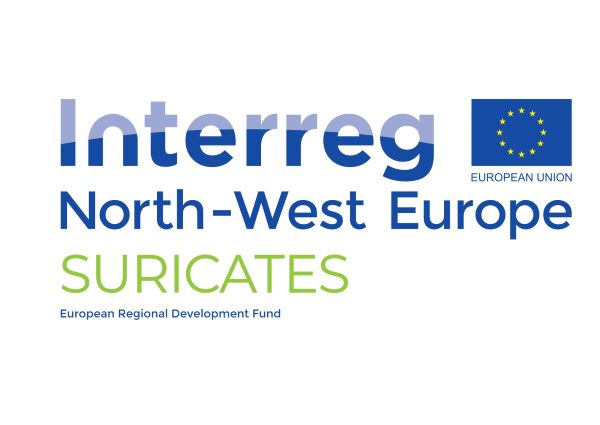Principle Investigator: Dr Richard Lord
Co-Investigators: Dr Keith Torrance
Dates: 2017-2023
Funder & Reference: Interreg North-West Europe
Total budget: Total project budget of €8. 01M includes €4.8M of ERDF funding received from Interreg North-West Europe (2017-2021)
The project aim is to increase sediment reuse for erosion and flood protection. We will provide authorities, port and waterway managers and erosion experts with new large scale solutions for sediment reuse in NWE ports, waterways and coastlines.
Climate change, erosion and flood risk increase require greater mitigation measures, consuming high volumes of natural resources. However, dredged sediments are a problem for EU ports/waterways providing navigation access with 200 million m3/y (80 million tonnes dry weight) generated. Increased social and environmental pressures show the critical need for new solutions to maintain and develop activity. Currently, more than 99% of EU marine sediment dredged is dumped at sea/managed as waste, with only 1% (800 000 t/year) reused. In SURICATES, 220 000t of sediment will be used in 4 new solutions as raw material to build resilient flood/erosion protection systems. We target an increase in the number of sediment reuse projects in NWE to drive sediment reuse to 1.3 Mt/y after 5 years, and 2.3Mt/y after 10 years in the EU. From the CEAMaS project national/global potential interest in reuse strategies demonstration, we will provide support for erosion/flood risk market development with local impact optimisation of sediment reuse. We will implement tools and methods for global impact quantification at regional scale using social, economic, employment and environmental modelling and we will test eco-innovative techniques in real-life conditions providing long term impact evaluation and guidelines for replication: riverbank strengthening, regeneration of harbour/river banks and beach nourishment.
Pilot implementation with long term impacts on territories is planned within the project for UK and NL. Networking activities for dissemination and operational guidance illustrated by 3 new projects for Fr, UK and IE will be developed and shared with local, national and EU authorities for implementation on project completion.
Outputs
One of the outputs of this research is the: BROADSEAT (Beneficial Reuse Of Any Dredged Sediment Environmental Assessment Tool).
BROADSEAT stands for "Beneficial Reuse Of Any Dredged Sediment Environmental Assessment Tool". It is designed to help you analyse the environmental merits (and any trade-offs) of a proposed or completed beneficial reuse/use dredging project. It uses your professional judgement of a real or hypothetical Beneficial Reuse Option compared to the Business As Use case, which is what you would do otherwise, or what would normally be common practice.
It scores your qualitative assessment of whether its better/the same/worse on a binary scale (plus one/zero/minus one), using your answers to a series of questions. These questions attempt to address the range of factors which might be considered. For each question you answer by selecting a decision from the dropdown list. There are 52 questions each relating to a single factor, split between 10 categories (transport comparison, energy comparison, circular economy aspects, waste management aspects, waste regulation aspects, water environment, ecosystem services, biodiversity & conservation, socio-economic impacts, UN Sustainable Development Goals), which are then arranged into four groups (Energy, Waste, Environment, Societal).
For each factor a weighting is provided, which is multiplied by the binary score generated by your answer to each question to give a score for the performance on this factor. The cell containing the resulting score is coloured, red (poor) through white (same) to green (good), reflecting the answers visually. The weightings are designed to give equal emphasis to the four groups, with a maximum score of 25 for all factors/categories in each group. Thus the maximum (or minimum) possible score overall is 100 (or minus 100).


.jpg)